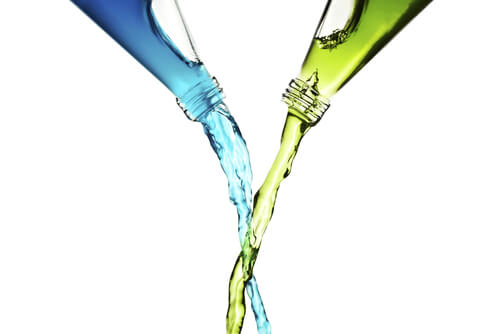Why Shouldn’t You Mix Vinegar With Bleach?

Many people think that mixing vinegar with bleach is a way to enhance the cleaning effect of these products. However, is this safe?

There are a wide variety of household products that, for safety, should not be mixed. While it is believed that their combination “enhances” their cleansing effects, it can actually be dangerous. Why shouldn’t you mix vinegar with bleach?
According to Kate Biberdorf, a chemistry professor at the University of Texas at Austin, this is one of the most dangerous domestic pairings. Its mixture releases a toxic gas that is harmful to health.
Why do people mix vinegar with bleach?
There are a couple of reasons why people choose to mix vinegar with bleach even though it releases a toxic gas. First, the vinegar lowers the pH of the bleach, which increases its disinfecting action.
On the other hand, most of the people who make this type of mixture are unaware of the reaction that occurs and, of course, the effects it can cause on health.
So, based only on the advice to make better cleaning products and disinfectants, they decide to mix and use the product without caution.
What reaction occurs when mixing vinegar with bleach?
To understand what happens with this mixture, some concepts must first be clarified. As Dr. Biberdorf points out, molecules like those found in vinegar and bleach are made up of atoms.
In turn, in the center of each atom there is a nucleus and, inside, there are two types of particles: neutrons and protons. A third type of particle, electrons, orbit the nucleus.
PH scale
Another aspect that is essential to understand is the difference between an acid and a base. Substances are measured on a pH scale :
- Acids: those whose pH is less than 7.
- Neutral: those whose pH is equal to 7.
- Bases: those with a pH greater than 7.
When the mixture of a base and an acid occurs, a chemical reaction occurs in which the base takes the proton from the acid and, as a result of this, a new chemical compound is formed.
So what happens when you mix vinegar with bleach?
As Biberdorf explains, one of the main components of bleach is sodium hypochlorite, which is considered a base. For its part, vinegar is an acid (acetic acid).
Therefore, when a person decides to mix vinegar with bleach, the sodium hypochlorite takes a proton from the vinegar and this reaction generates a hypochlorous acid. However, it does not end here.
Hypochlorous acid reacts with the rest of the vinegar and forms a gas known as chlorine gas, which can be particularly harmful to health.
Negative effects of chlorine gas
Chlorine gas in its pure state can be seen as a greenish-yellow color; however, gas caused by a mixture of chemicals is dispersed in the air and is often invisible.
Despite this, it can be perceived by its strong smell and the negative effects it causes on the body. First, it affects the mucous membranes, including the eyes, throat, and lungs.
As a result, symptoms such as watery eyes, chest congestion, breathing difficulties and a burning sensation, among others, may occur. Also, in case of skin contact, it can detonate into blisters and irritation.

What to do to avoid these risks?
Of course, to avoid the aforementioned risks , the mixture of vinegar and bleach must be avoided at all costs. Instead, it’s best to use fresh bleach when cleaning tasks are desired.
Using bleach and vinegar separately can help disinfect dozens of surfaces. For safety, it is best to use them individually and only when necessary.
Likewise, you can try other natural cleaning alternatives that are safe to use: lemon juice, baking soda, hydrogen peroxide and salt are some options.
Did you know the risks of mixing vinegar with bleach? Now that you know that its combination can be very harmful, avoid it completely and share this information with yours.








